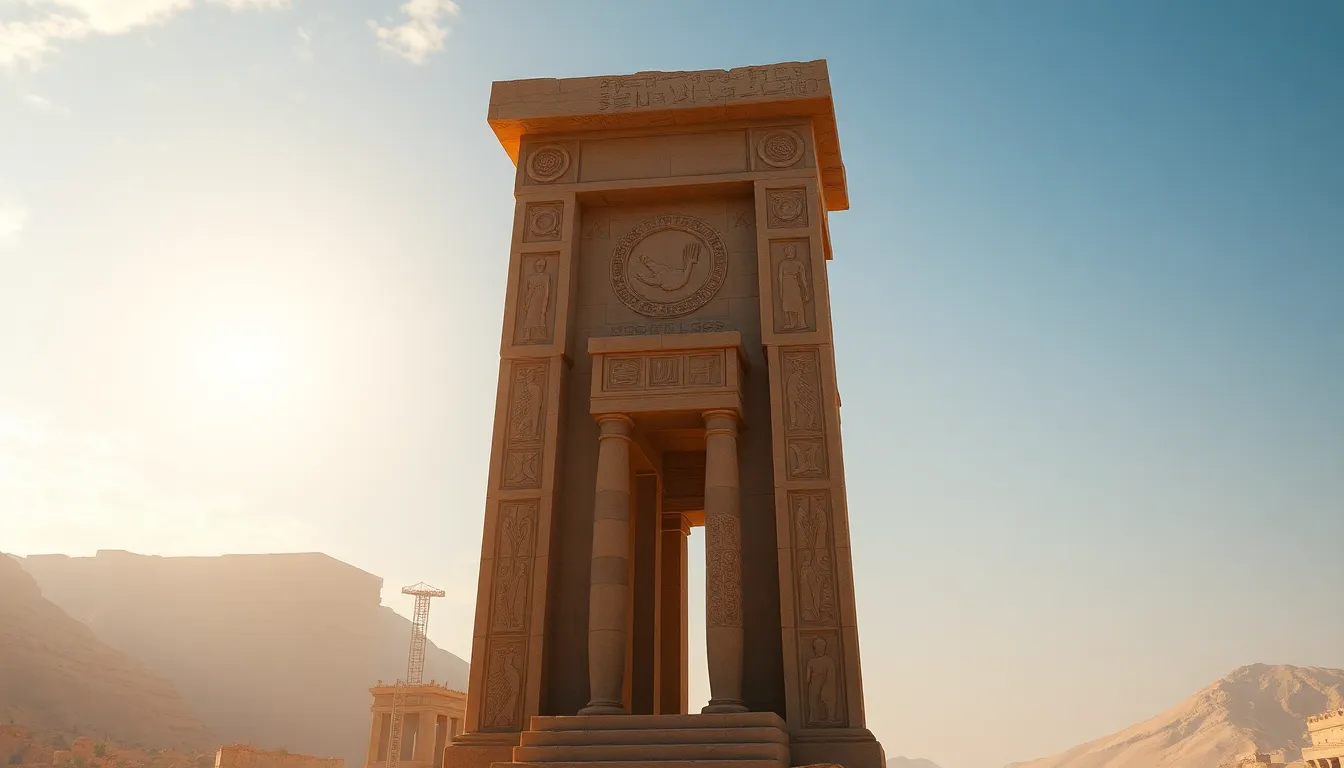The Cosmic Importance of the Djed Pillar
I. Introduction
The Djed Pillar, often depicted as a tall, column-like structure with a broad base and a series of horizontal lines at the top, is one of the most recognizable symbols from ancient Egyptian culture. It is not merely an artistic motif but a potent emblem representing stability, endurance, and the eternal cycle of life and death.
In ancient Egyptian culture, the Djed Pillar held profound significance, serving as a symbol of the divine connection between the earth and the afterlife. This article aims to explore the multifaceted importance of the Djed Pillar, examining its historical context, symbolism, and its role within Egyptian mythology.
II. Historical Context
The origins of the Djed Pillar can be traced back to the early dynastic period of ancient Egypt, where it began to appear in religious texts and inscriptions. Over time, its symbolism evolved, reflecting the changing beliefs and values of Egyptian society.
Recent archaeological findings, including artifacts and inscriptions from various sites such as temples and tombs, have shed light on the Djed Pillar’s role in ancient rituals and its significance in the lives of the Egyptians. Key findings include:
- Artifacts depicting the Djed Pillar in burial contexts, emphasizing its association with the afterlife.
- Inscriptions that link the Djed Pillar to the god Osiris, reinforcing its status as a symbol of resurrection.
- Architectural remnants that incorporate the Djed into temple designs, showcasing its importance in religious practices.
III. Symbolism of the Djed Pillar
The Djed Pillar embodies several layers of meaning within ancient Egyptian thought:
- Stability and Endurance: The Djed represents the concept of stability, much like a pillar supports a structure. It signifies the enduring nature of the divine and the unchanging laws of the universe.
- Connection to Osiris: Central to the Djed’s symbolism is its connection to Osiris, the god of the afterlife. The Djed is often depicted alongside Osiris, symbolizing his resurrection and eternal life.
- Resurrection and Renewal: The Djed Pillar is synonymous with the cycle of life, death, and rebirth, representing the promise of renewal and the continuity of existence.
IV. The Djed Pillar in Egyptian Mythology
In Egyptian mythology, the Djed Pillar plays a crucial role in the Osirian mythos, which narrates the story of Osiris, his death, and resurrection. This narrative is foundational to understanding the Djed’s significance:
- Role in the Osirian Mythos: The Djed Pillar is often depicted during the rituals surrounding Osiris, symbolizing his resurrection and the stability he brings to the afterlife.
- The Djed as a Cosmic Axis: Some interpretations suggest that the Djed serves as a cosmic axis, connecting the earthly realm to the divine. It symbolizes the bridge between life and the afterlife.
- Links to Other Deities: The Djed is associated with various deities, including Isis and Horus, emphasizing its centrality in the pantheon and its role in the cosmic order.
V. Architectural Significance
The architectural significance of the Djed Pillar cannot be overlooked. It was commonly used in the design of temples and tombs, reflecting the Egyptians’ belief in the connection between the physical and spiritual worlds:
- Use in Temples and Tombs: The Djed Pillar frequently appeared in temple iconography and tomb decorations, serving as a reminder of the divine presence and the eternal nature of the soul.
- Monumental Architecture: Structures such as the Great Pyramid of Giza incorporated elements of the Djed Pillar, linking them to the themes of resurrection and eternity.
- Relationship between Structure and Cosmic Beliefs: The architecture of temples and tombs reflected ancient Egyptians’ beliefs in the cosmos, with the Djed Pillar embodying their understanding of stability and order in the universe.
VI. Contemporary Interpretations
In modern times, the Djed Pillar has found new interpretations and meanings, influencing various aspects of contemporary culture:
- Modern Spirituality: Many contemporary spiritual movements draw inspiration from the Djed, seeing it as a symbol of stability and spiritual growth.
- Influence on Art and Popular Culture: The Djed Pillar appears in various artistic expressions, including paintings, jewelry, and literature, resonating with themes of resurrection and renewal.
- Reimagining the Djed: Artists and spiritual seekers often reinterpret the Djed Pillar in a modern context, exploring its themes of cosmic order and personal transformation.
VII. The Djed Pillar and Astronomy
The Djed Pillar also has connections to ancient Egyptian astronomy, reflecting the civilization’s deep understanding of the cosmos:
- Alignments with Celestial Bodies: Some researchers suggest that the Djed Pillar may have been aligned with significant celestial events, emphasizing its role as a symbol of cosmic order.
- Significance in Ancient Egyptian Calendars: The Djed was linked to the agricultural calendar, marking important seasonal changes and the cycles of nature.
- The Djed as a Representation of Cosmic Order: The Djed Pillar encapsulates the ancient Egyptians’ belief in a harmonious universe, where the divine and earthly realms are interconnected.
VIII. Conclusion
In summary, the Djed Pillar holds immense cosmic importance in ancient Egyptian culture, symbolizing stability, resurrection, and the divine connection between life and the afterlife. Its enduring legacy continues to inspire modern interpretations and spiritual practices.
The Djed Pillar invites us to reflect on its significance and encourages further study into the rich tapestry of ancient Egyptian symbolism, reminding us of the timeless themes of renewal and cosmic order that transcend the ages.




